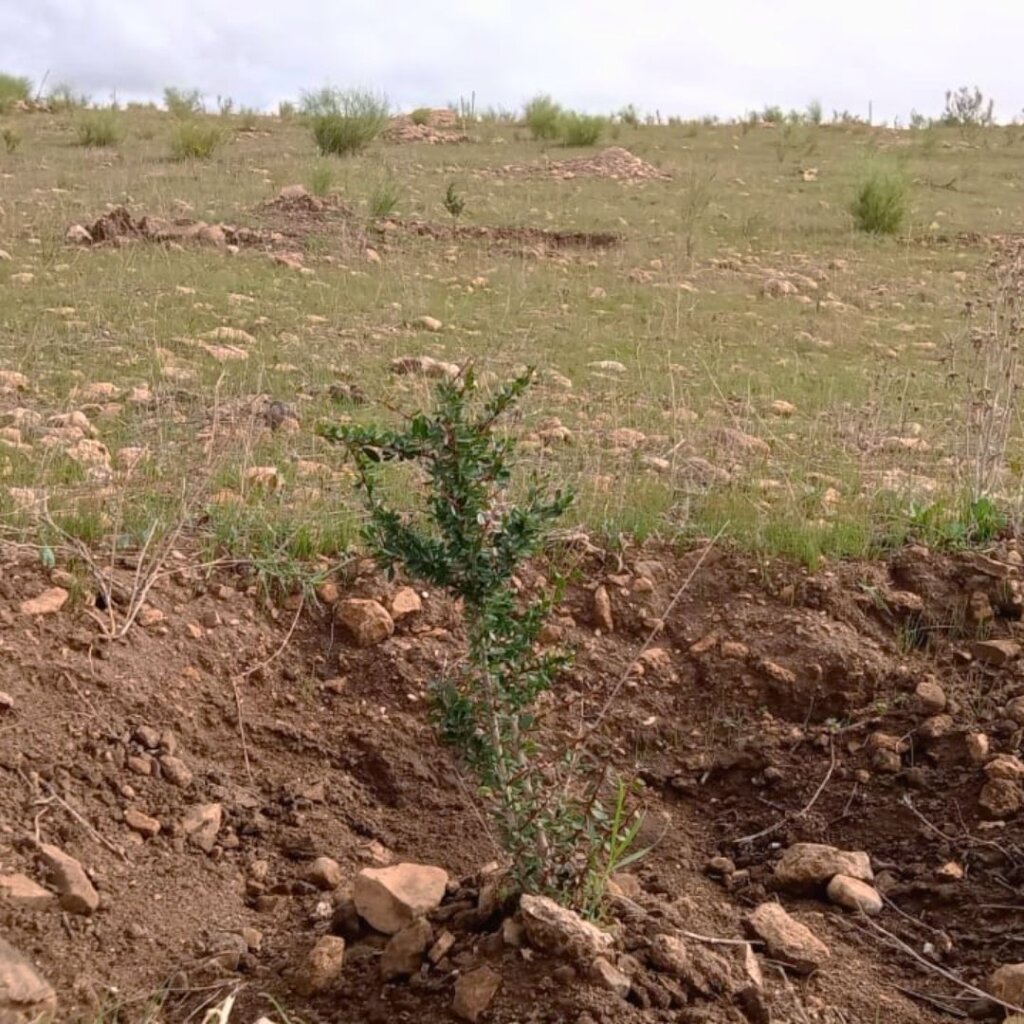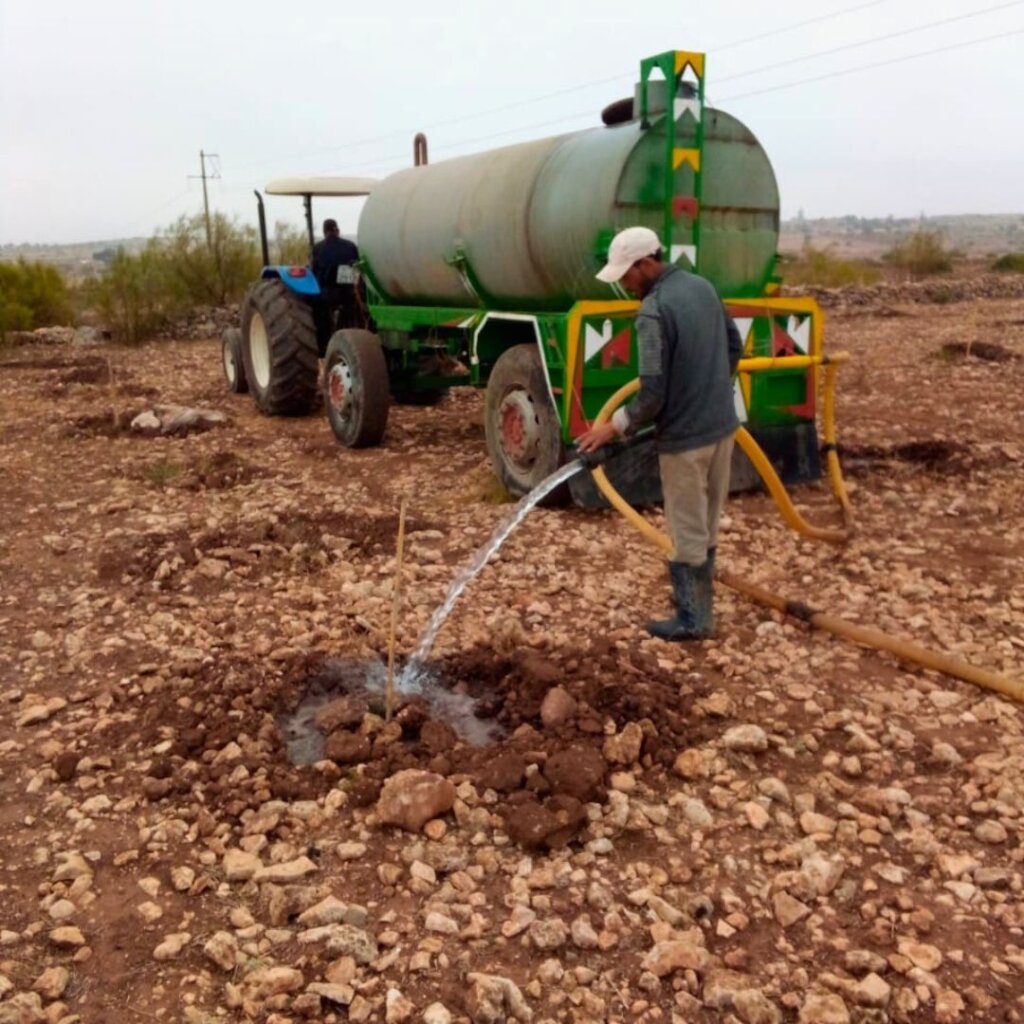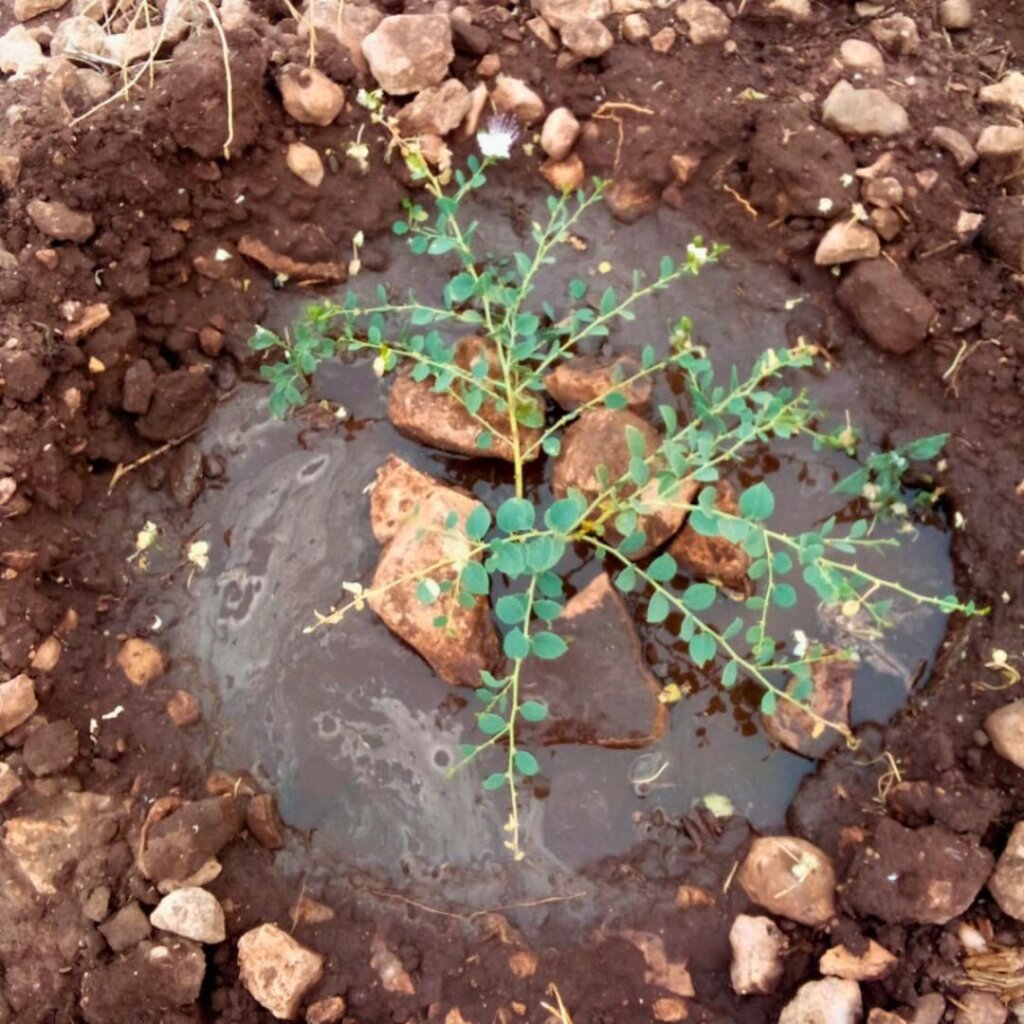By Amina Elhajjami | Program Director
The High Atlas Foundation (HAF) was founded on the concept of capacity building, promoting autonomy and self-sufficiency of community members. HAF has been working with local communities to promote local development and increase farmers' productivity and income generation by tree planting.
Argan:
Our current project is planting 6624 Argan trees on 40 hectares in the Khatt Azakane Commune of the Safi Province; a venture supported in kind by our partners at FRE Skincare. The project's design prioritizes the human element while maintaining the long-term sustainability of agricultural development. It assists 32 families by creating approximately 320 new jobs, with a total of 120 positions filled by rural women in the 10 women's cooperatives HAF has established for the skilled labor and time-intensive method of processing the nut and selling the product. The 32-member families are in charge of all project maintenance tasks, including tracing, excavating, planting, and watering the trees. They work six days a week.
Economic Input
The cultivation and harvest of the argan fruit has economic significance in the creation of around 48,000 working days for the local community and economic opportunities for an estimated three million people in Southwest Morocco. It takes approximately 30 kilograms of fruit to produce 1 liter of argan oil. Argan oil production in Morocco is estimated to be 4,000 to 6,000 tons per year, with exports between 1,000 and 1,500 tons per year. Argan trees provide a constant source of supplemental nutrition for the more than 26,000 heads of cattle that boost rural income, and a thriving export market has developed for argan oil as a high-value, luxury product whose price is notable compared to other oils.
Environmental Input
Argan is the second most abundant tree in Moroccan forests, over twenty million of which play a vital role in the food chain and environment. Perfectly adapted to the region’s harsh environment, it can survive extreme heat, drought, and poor soil. The tree’s roots grow deep into the ground in search of water, which helps bind soil and prevents erosion and desert encroachment. An irreplaceable part of the ecological balance of the region, it plays an important role in enhancing vegetation by helping slow soil degradation and providing habitat and food for many animals.
Charcoal-making, increasingly intensive cultivation, and the expansion of urban and rural settlements have decreased their numbers significantly over the past century. A by-product of the new income from the production of argan oil is the substantial increase in livestock numbers which results in overgrazing. This directly harms the existing, mature argan trees as goats will climb high into their branches to reach their fruit. Overgrazing can cause soil erosion and detriment to the microclimate of the forest by reducing ground cover and surface humidity and increasing temperature thus impeding the long-term regeneration of the forest.
Social Input
For centuries the argan plant has been a mainstay of the Amazigh and Arab-origin indigenous rural communities who developed a culture and identity around it. The argan tree is a symbol of Moroccan culture, heritage, and biodiversity, and a source of income and empowerment for many rural families. Because it is a multi-purpose tree and each part of it is usable as a food or economic resource, it plays a vital socio-economic role in local culture and creates food security and income potential for over two million rural Moroccans. The new revenue stream will allow improvements to living conditions and create economic opportunity for future generations by incentivizing families to stay and prosper in the area and for local children to pursue their education and reduce the area's rate of school dropouts.
The planting of the argan trees in Safi is expected to benefit the community for generations in untold ways. The potential is limitless. The trees were planted on December 28, 2022 and will bear fruit in the fifth year. To mitigate the wait time between the planting and productivity of the tree, HAF has supported the planting of a secondary crop to increase the productivity of the cultivated area, a crop with a much faster turnaround that would provide a steady income to families while the argan trees mature.
Capers
Among the argan trees, there are 13,442 caper plants which after one year will start producing fruit (flower buttons). The plants are projected to yield between 0.5 kilograms and 1 kilogram per week. Throughout production from May to September with 13,000 caper plants, 2,750 kilograms of the fruit will be harvested weekly resulting in 55 tons in total per year. It is estimated that the 13,442 caper plants will generate 1,100,000 MAD in revenue per year.
According to our data and statistical analysis, with the projected increase of plants, production is estimated at 63,000 kilograms per year.
Economic Input
A harvest duration of only three months is necessary for profitability and caper plantings over 25 to 30 years old can continue productivity. The youngest, smallest buds fetch the highest prices so daily picking is typical, which means regular and frequent income generation for the farming families. With the relatively fast turnaround, farming of the caper plant will increase household income in rural communities almost immediately and result in greater agricultural and human development possibilities during the relatively lengthy maturing period of the argan trees.
Environmental Input
The caper plant is a drought-tolerant perennial that requires a semiarid or arid climate and grows despite poor soil quality and high daily temperatures of up to 40 degrees. The plant thrives in Morocco’s harsh environment with its steep rocky slopes and dunes because of its high root/shoot ratio and its ability to maximize the uptake of minerals in poor soils. The plant tolerates rocky areas and different soil associations, be it silty clay or sandy, rocky, and gravelly surface soils, with less than 1% organic matter. With their extensive root systems, this species introduction in semiarid lands may help to prevent the disruption of the equilibrium of fragile ecosystems and reduce erosion.
Social Input
The creation of a farming collective has strengthened community bonds as they work together to learn and develop caper farming in this area. This collaboration towards a common goal creates a stronger community, grows problem-solving capabilities, and encourages cooperation on other issues.
HAF and Tounaouse Cooperative collaboration.
The collaboration between the HAF) and Tounarouse cooperative represents a shared commitment to fulfilling the obligations laid out in the partnership agreement. Together, HAF and the Cooperative are dedicated to upholding our responsibilities and ensuring the successful execution of this vital project. With the support of HAF, the Tounarouse cooperative is empowered to meet its obligations, including the careful planting of 6,642 argan trees, 89 carob trees, and 13,442 caper trees, as well as the rigorous 29-month irrigation schedule. Additionally, the agreement includes provisions for meticulous irrigation practices and the ongoing care of these trees.
Moreover, we recognize the importance of maintaining the health and well-being of these trees through regular care and weeding, which is a critical part of our collective duty. This partnership underscores our mutual dedication to the project's success and our shared vision for a greener, more sustainable future for our community. Also, we aim to create a thriving, sustainable ecosystem that not only benefits the farmers but also contributes to the overall well-being of our community and the environment. Together, we are taking a significant step towards a greener and more prosperous future.
Project reports on GlobalGiving are posted directly to globalgiving.org by Project Leaders as they are completed, generally every 3-4 months. To protect the integrity of these documents, GlobalGiving does not alter them; therefore you may find some language or formatting issues.
If you donate to this project or have donated to this project, you can receive an email when this project posts a report. You can also subscribe for reports without donating.
Support this important cause by creating a personalized fundraising page.
Start a Fundraiser

